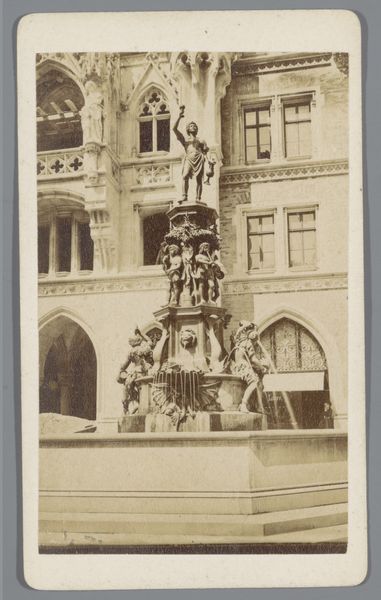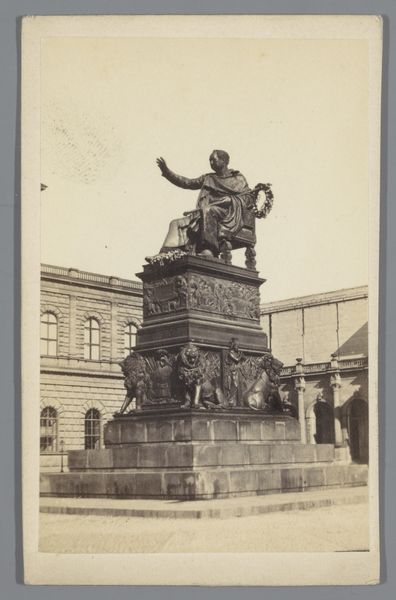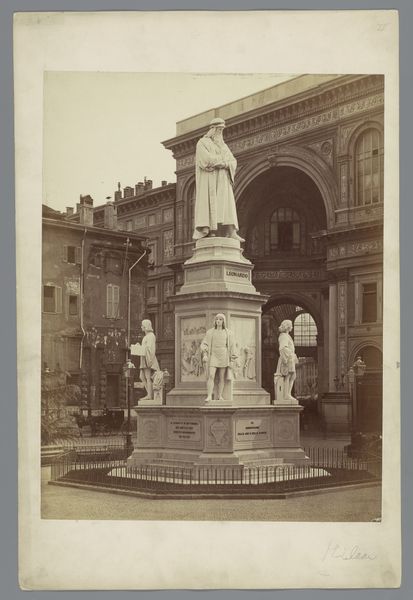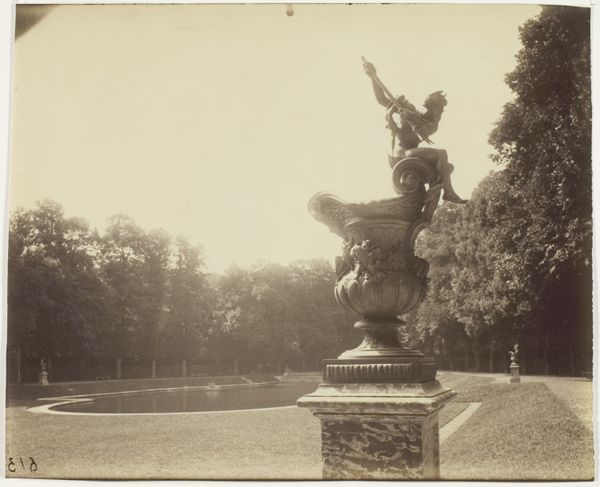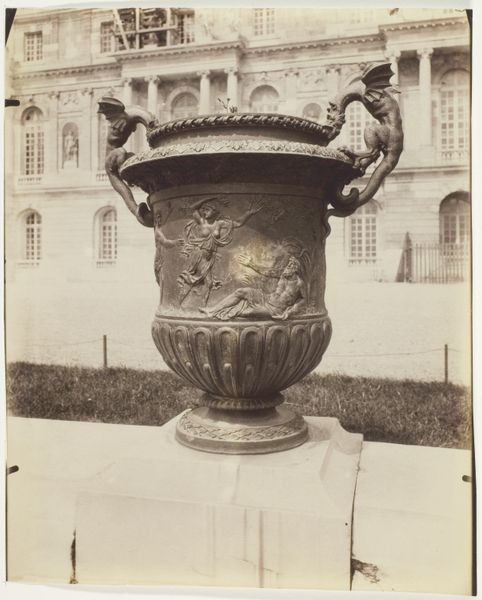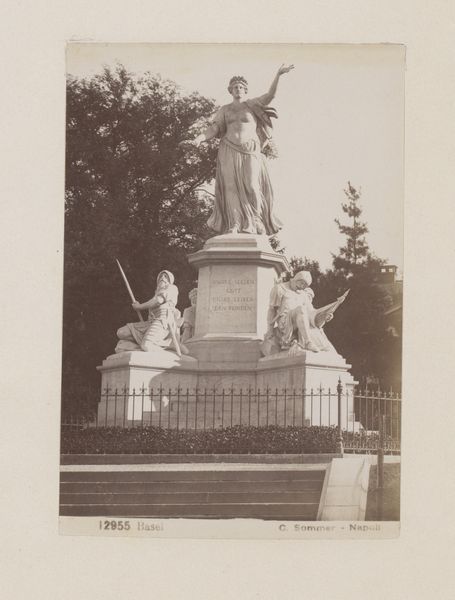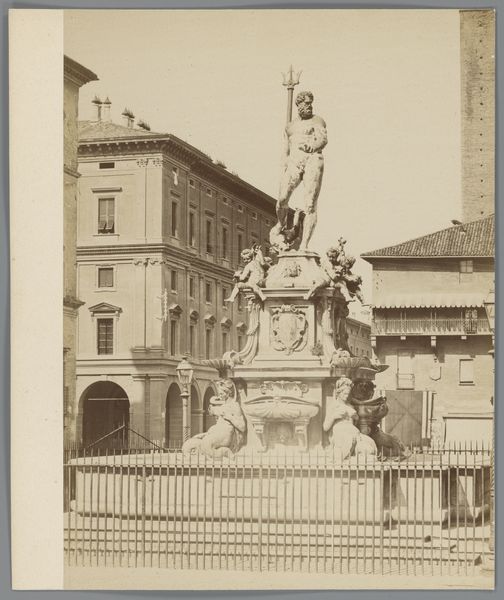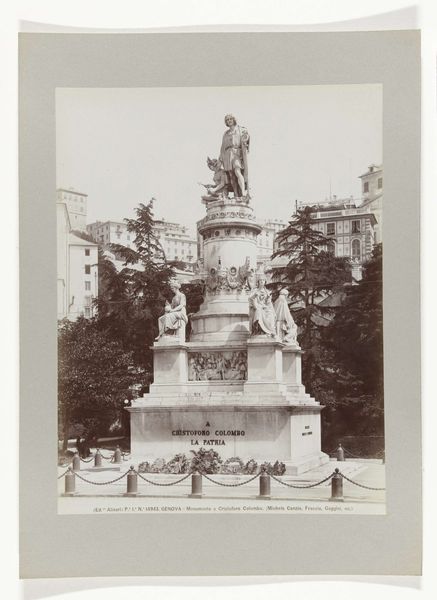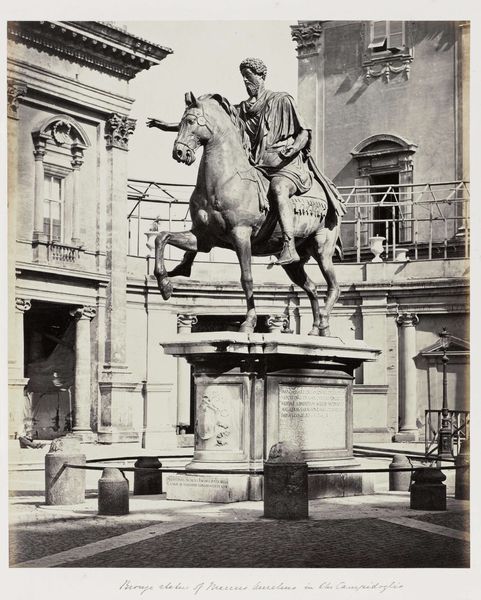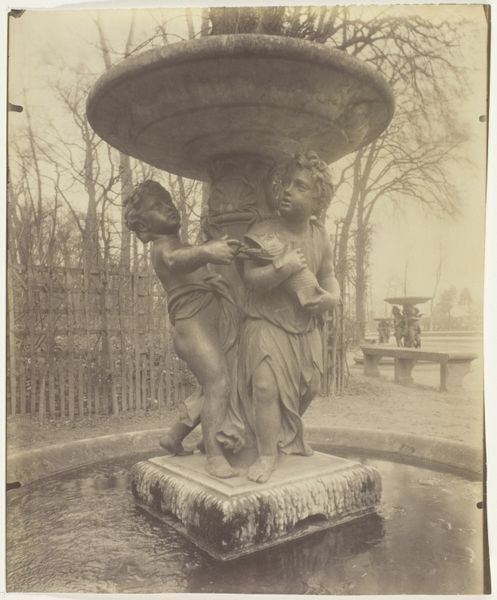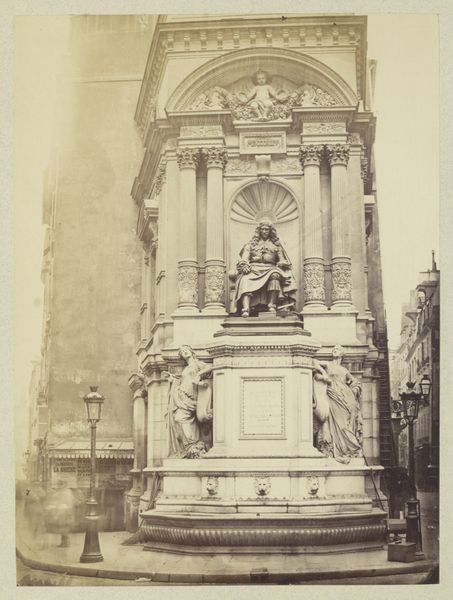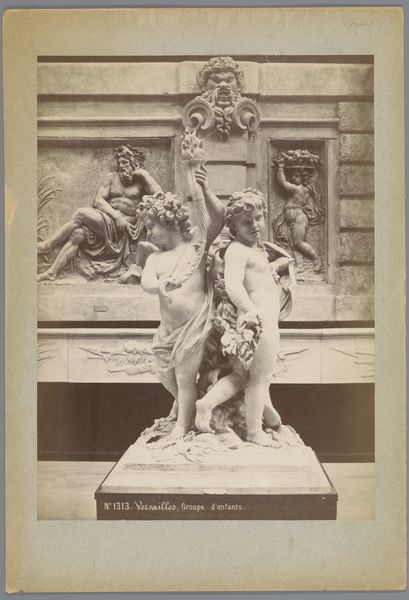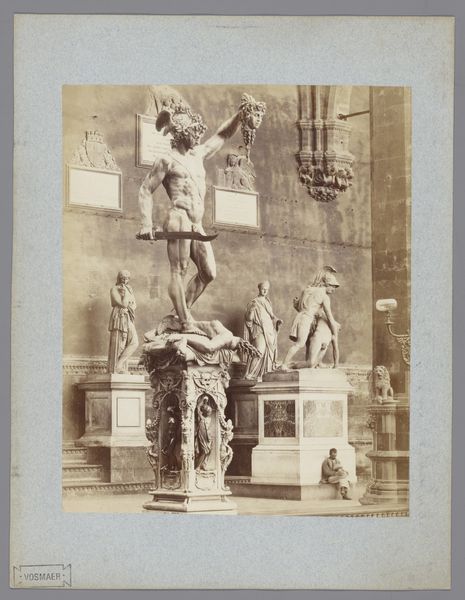
print, bronze, photography, sculpture, gelatin-silver-print
# print
#
landscape
#
bronze
#
photography
#
sculpture
#
gelatin-silver-print
#
cityscape
#
realism
Dimensions: height 261 mm, width 191 mm
Copyright: Rijks Museum: Open Domain
Editor: This gelatin silver print, showing the "Fountain on the Piazza della Santissima Annunziata in Florence, Italy," made sometime between 1851 and 1900, is quite striking. The sepia tones create an aged feel, and the composition is strongly focused on the fountain's intricate details. What do you see as the most important visual aspects of this image? Curator: Certainly. Notice how the photographer utilizes the geometric structure of the fountain itself? The circular basin provides a base, upon which rests a complex interplay of forms: the sculpted figures, the swirling ornamentation, and the very way the water is presented as it cascades downwards. Observe also the framing created by the architecture behind the fountain – the arches, columns, and the rectangular shapes of the buildings. Editor: That's a great observation. The arches really do frame the fountain nicely. Do you think the light and shadow play a role in our perception? Curator: Undeniably. The light appears to be even and diffuse, allowing for a balanced view of the fountain's form and details, rather than creating a strong contrast that could emphasize one part over another. What effect do you think that has on the image's overall composition? Editor: Perhaps it allows us to appreciate the intricacies of the sculpture in their totality without distraction. Everything from the figures at the very top to the details within the fountain. Curator: Precisely. The photographer is emphasizing a holistic perspective, prioritizing a complete formal comprehension of the artifact and its surrounding space. We're being asked to assess not only what the fountain looks like, but how its composition and interplay of lines relate to our understanding. Editor: It’s fascinating to think about the choices the photographer made to present the fountain in this way. The details about its visual components really highlight how deliberate the artistic process is, whether it be capturing the space through architecture or sculpture, or framing it just so. Curator: I concur. By focusing on these visual elements, we unlock new perspectives beyond just documentation, thus making the artwork even more fascinating.
Comments
No comments
Be the first to comment and join the conversation on the ultimate creative platform.
